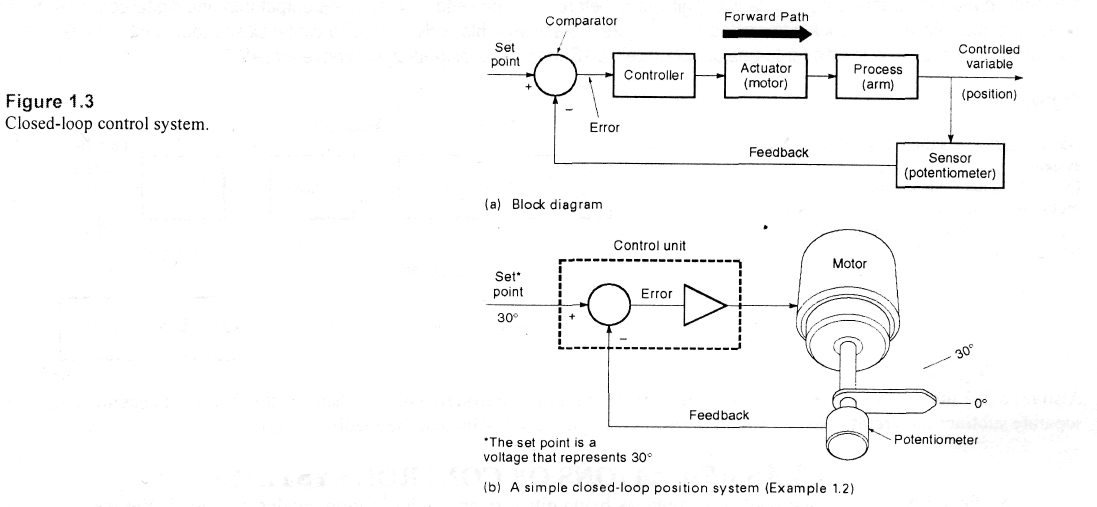
- •Содержание:
- •Введение
- •Give the Russian equivalents to the following international words and word-combinations:
- •Memorize the meaning of the following words and word-combinations from the preface:
- •Read the preface and find out the following:
- •Preface
- •Answer the questions of Ex. 3.
- •Translate the preface using a dictionary. Text 1. Control systems
- •Memorize the meaning of the following words and word-combinations from Text 1:
- •Look through Text 1 to find out the following:
- •Control systems
- •Text 2. Open–loop control systems
- •Translate Text 2 orally.
- •Text 3. Closed–loop control systems
- •Read and translate Text 3:
- •Text 4. Analog and digital control systems
- •Analyze the grammatical structure of the following sentences and translate them:
- •Look through Text 5 to find out the following:
- •III. Look through Text 6 to find out the following:
- •IV. Answer the questions of Ex. III.
- •V. Read text 6 attentively. Translate it orally. Sequentially Controlled Systems
- •Read and give a short summary of Text 7.
- •Answer the questions of Ex. III.
- •Look through the text once again to sum it up (orally or in writing).
- •Read and give a short summary of Text 9.
- •II. Make a list of terms from Text 9 and memorize them.
- •III. Translate Text 9 in writing.
- •Glossary
Text 3. Closed–loop control systems
Read and translate Text 3:
In a closed-loop control system, the output of the process (controlled variable) is constantly monitored by a sensor, as shown in Figure 1.3(a). The sensor samples the system output and converts this measurement into an electric signal that it passes back to the controller. Because the controller knows what the system is actually doing, it can make any adjustments necessary to keep the output where it belongs. The signal from the controller to the actuator is the forward path, and the signal from the sensor to the controller is the feedback (which "closes" the loop). In Figure 1.3(a), the feedback signal is subtracted from the set point at the comparator (just ahead of the controller). By subtracting the actual position (as reported by the sensor) from the desired position (as defined by the set point), we get the system error.
The error signal represents the difference between "where you are" and "where you want to be." The controller is always working to minimize this error signal. A zero error means that the output is exactly what the set point says it should be. Using a control strategy, which can be simple or complex, the controller minimizes the error. A simple control strategy would enable the controller to turn the actuator on or off—for example, a thermostat cycling a furnace on and off to maintain a certain temperature. A more complex control strategy would let the controller adjust the actuator force to meet the demand of the load, as described in Example 1.2.

EXAMPLE 1.2
As an example of a closed-loop control system, consider again the robot arm resting at 0° [see Figure 1.3(b)]. This time a potentiometer (pot) has been connected directly to the motor shaft. As the shaft turns, the pot resistance changes. The resistance is converted to voltage and then fed back to the controller. To command the arm to 30°, a set-point voltage corresponding to 30° is sent to the controller. Because the actual arm is still resting at 0°, the error signal "jumps up" to 30°. Immediately, the controller starts to drive the motor in a direction to reduce the error. As the arm approaches 30°, the controller slows the motor: when the arm finally reaches 30°, the motor stops. If at some later time, an external force moves the arm off the 30° mark, the error signal would reappear, and the motor would again drive the arm to the 30° position.
The self-correcting feature of closed-loop control makes it preferable over open-loop control in many applications, despite the additional hardware required. This is because closed-loop systems provide reliable, repeatable performance even when the system components themselves (in the forward path) are not absolutely repeatable or precisely known.
Make a list of terms from Text 3 referring to closed-loop control systems and memorize them.
Give an example of a closed-loop control system.
Write a brief summary of text 3.
